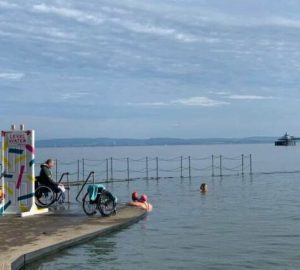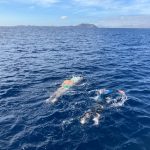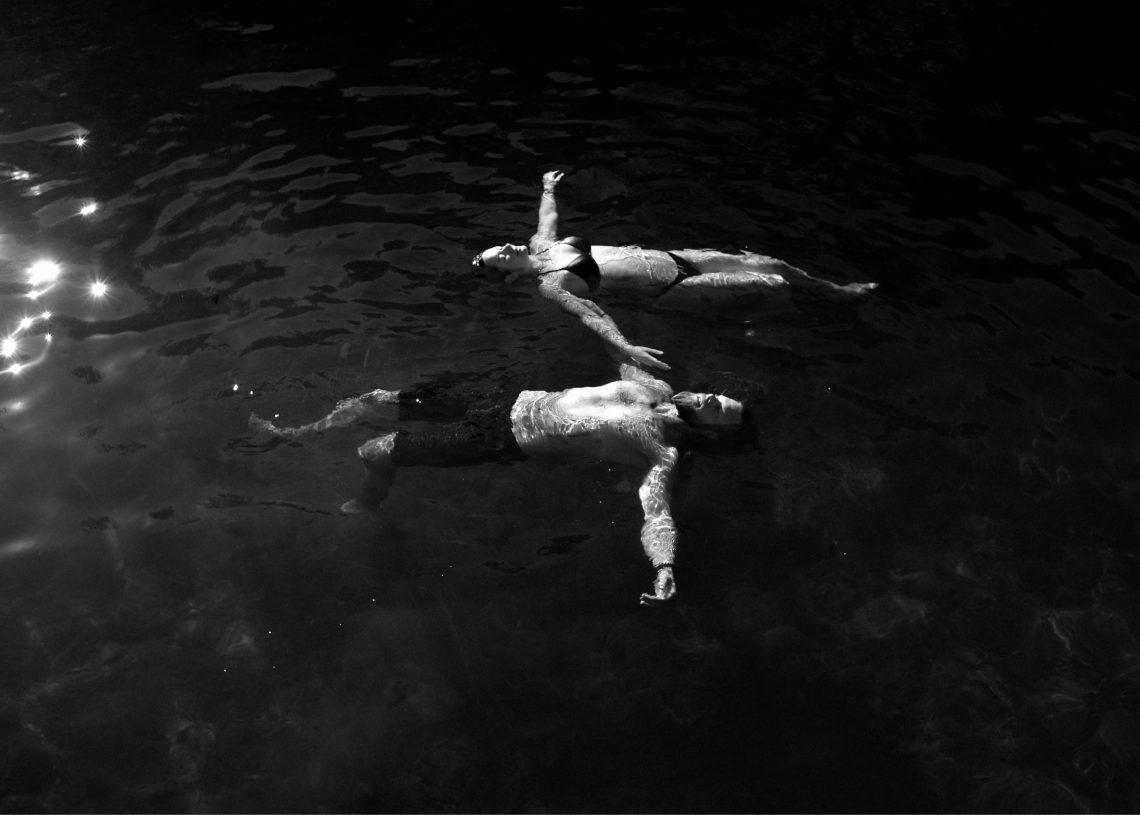
A Winter Swimming Mind: Three Lessons
In what ways are our minds always winter swimming? When extended into ritual, winter swimming can transform into a praxis – a combination of theory and practice – that we can carry with us year-round, says Lindsey Holmes.
“Winter swimmers don’t do it for discipline, we do it to transcend.”
Susan Bright
My swim bag lies in the laundry room. Heavy thunderstorms have fallen across central Texas all week, keeping me away from Barton Springs, a 1000-foot-long, aquifer-fed swimming pool with nearly 2.5 acres of water surface located in the centre of Austin, Texas. This fact that this ancient spring has managed to survive despite its location in the heart of one of the fastest growing cities in the United States is nothing short of an environmental miracle. Like the Longhorn and Tex-Mex cuisine, Barton Springs is a crossbreed, an open water hybrid. Peek under the surface of the aqua green waters and you will see sagittaria (arrowhead) and cabomba (fanwort) lining the rocky limestone bottom as blue gill, sunfish and largemouth bass glide serenely below. The springs are also home to Eurycea sosorum, the endangered Barton Springs Salamander (see footnote 2), found nowhere else in the world. There is even an eel said to be lurking at the north dam, a fact I enjoy reminding my partner about.
I glance into the open laundry room.
The swim bag stares back, sullen and accusing. Perhaps no writing about swimming would ever take place unless mysterious forces kept us from the pool. Even from the couch, I find that my mind persists in winter swimming. Its lessons bubble up to the surface.
1. You gotta be a damn fool
I learned to swim in March 2022 and began open water swimming in Barton Springs in the fall of that year, deciding to take it up as a way to increase “mental toughness” on my runs and bike rides. Swimming but not yet a swimmer, I was already doing what many swimmers do, especially those that gravitate to the open water. I was hunting superpowers. Barton Springs – O, the dreaded chill waters! –would be my crucible. As I braced myself against the (imagined) chill, I had no idea that in the coarse textures of winter swimming I was forging the architecture of a cathedral of pleasure, solace and gratitude.
Texas is a land of extremes. Compared to Europe or the UK, we don’t have much of a winter to speak of, but we do have sudden, debilitating freezes. Drops in mercury that rock our poorly managed power grid and shock bodies still seared from record-breaking steaks of 105 F days. Because of the oppressive dominance of the Texas heat, Barton Springs, at a steady 68 degrees Fahrenheit, is regarded as icy by locals. Start swimming here year-round and you get used to people calling you crazy.
“You gotta be a damn fool to do this!” A refrain uttered, so the story goes, by Beverly S. Sheffield, legendary activist and steward of Barton Springs, each time he got into the water in winter. For the refuge of Barton Spring’s warmth is found through a portal of bristly texture, a pugnacious initial few second of watery chill (the prelude being the wind bath back on deck after disrobing). The initial seconds of transition are a reverse birth: from chaos into solace. I used to hate the wind. Now I’ve taken to drinking scalding tea while making a point to stand up into the wind in between quarter miles. A winter swimming mind is a foolish and wild mind. It is one that stands proudly where others deem inappropriate and uncomfortable to stand.
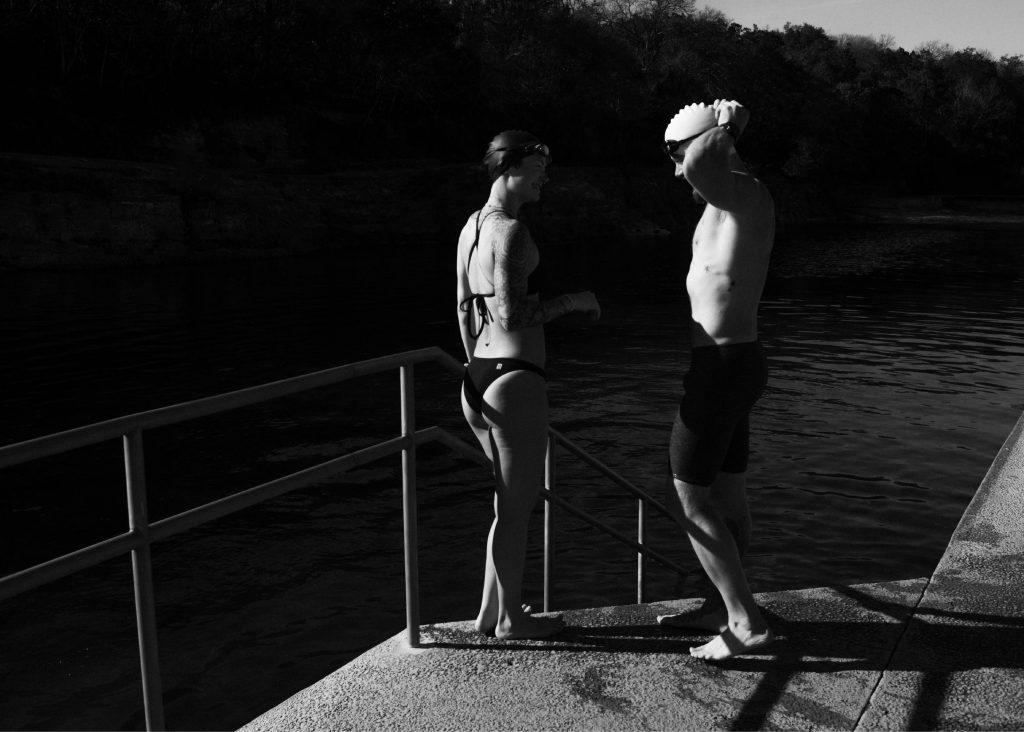
2. Know thy swim
Victor Shklovsky, the early 20th century Russian literary scholar, theorised the concept of “defamiliarisation” or ostranenie, the artistic technique of presenting common things in an unfamiliar or strange way. To Shklovsky, the value of poetic language lies in its inherent difficulty, its rough and briary texture that our brains rub up against. Winter swimming functions the same. It is a poetics, a way of (re)presenting the practice of swimming anew to each of us by reducing the practice to pure sensation and primordial feelings of urgency (my whole body is numb), solace (fully present in the water) and deep gratitude for the salvation found in a simple cup of tea or warm pair of socks. Winter ostranenie is about feeling the texture of the world as closely as one can. By being closest to the texture of the swim, we become close to the texture of ourselves. We are stripped down to our primal instincts, and if we’re lucky, we are cracked open at the edges a bit. Get cold and we catch a glimpse of our unadulterated and unfiltered self. What we do with that knowledge is up to us.
3. Make kin
I remember the apprehension of a lazy summer and warm fall. I remember thinking those days are numbered, doubtful of my ability to weather my second winter at the pool. Soon it will be all dash and scurry, feet frozen, across the deck after the swim is done. Chatter-toothed hellos. I am so glad to see you. So glad to be here with you and living with you. We are slim and smooth in the warm water, all of us slick-backed as cormorants gliding by, merging together for the fun of it. In winter, we have the entire pool to swim in but we are inexplicably drawn together. We move in waves. Our bodies draw together. To draw: to extract, to produce, to take in a breath. To create form where there once was none. See also: poetics.
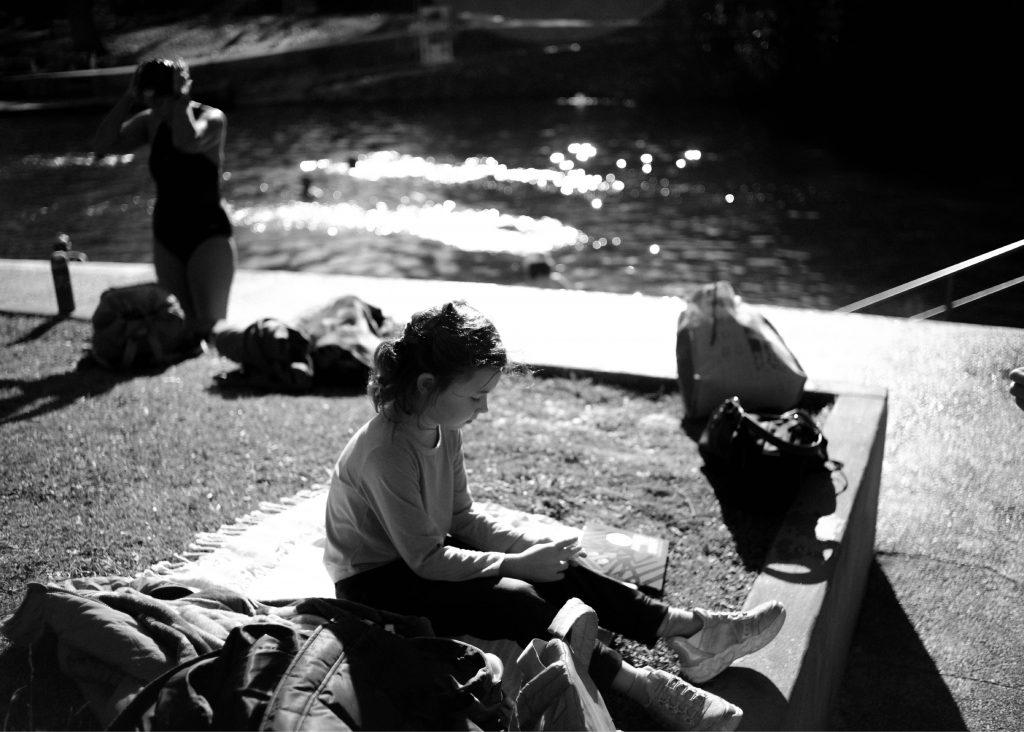
“Look, a wave of four!” my daughter exclaims, genuinely excited to spot a group of swimmers moving down the length of the pool together. I am genuinely excited that I know all of their names (their strokes as familiar as their faces) and I am sad I am not with them. It strikes me that we are all gathered around a watery hearth when we swim like that. This is strange kin. This is home.
“It is a fabulous high, like the wave of optimism that rolled around the planet declaring today, today, today and again today. Now. This is it. And the people who gather here are also it, a community on the edge of a millennium, seamlessly threading time.”
Susan Bright
In late fall, I wondered if I could survive another season of winter swimming. In these final weeks of Texas winter, I now ask myself how I can survive without it. How could swimming be anything but windswept and steamy surfaces, a sharing of courage in between laps, a numb face. How can I part with the power to generate courage, to draw it out of thin air? How can there be any season but this?
How can I part with all this texture?
I dream of an endless winter. May our minds always be winter swimming.
Footnotes:
- Opening quote: Susan Bright, Breathing Under Water (Plain View Press 2015)
- Named for Save Our Springs Alliance (SOS), the nonprofit dedicated to protecting it and its natural habitat.
- Point 3 Make Kin: A phrase inspired by feminist scholar Donna J. Haraway’s work Staying with the Trouble: Making Kin in the Chthulucene (Duke 2016). Haraway argues that we must realise our interconnected nature and shared kinship between ourselves, nonhuman species and our environments.
- Closing quote: Susan Bright, Breathing Under Water (Plain View Press 2015)
Words: Lindsey Holmes. Photos: Manda Dawn







